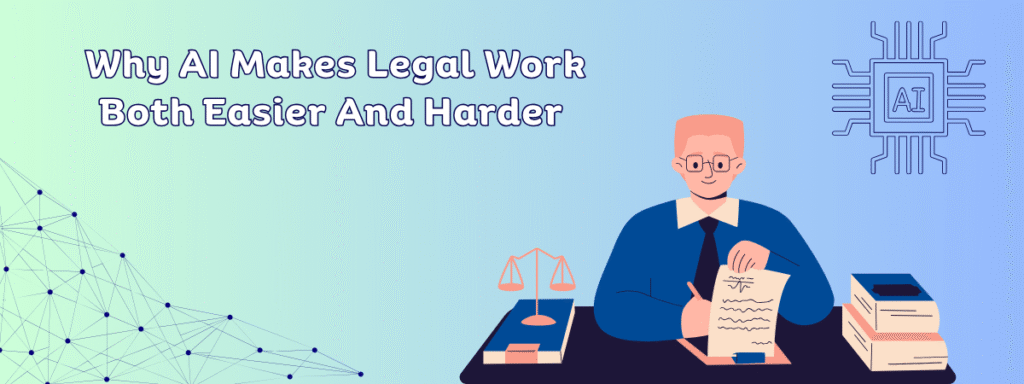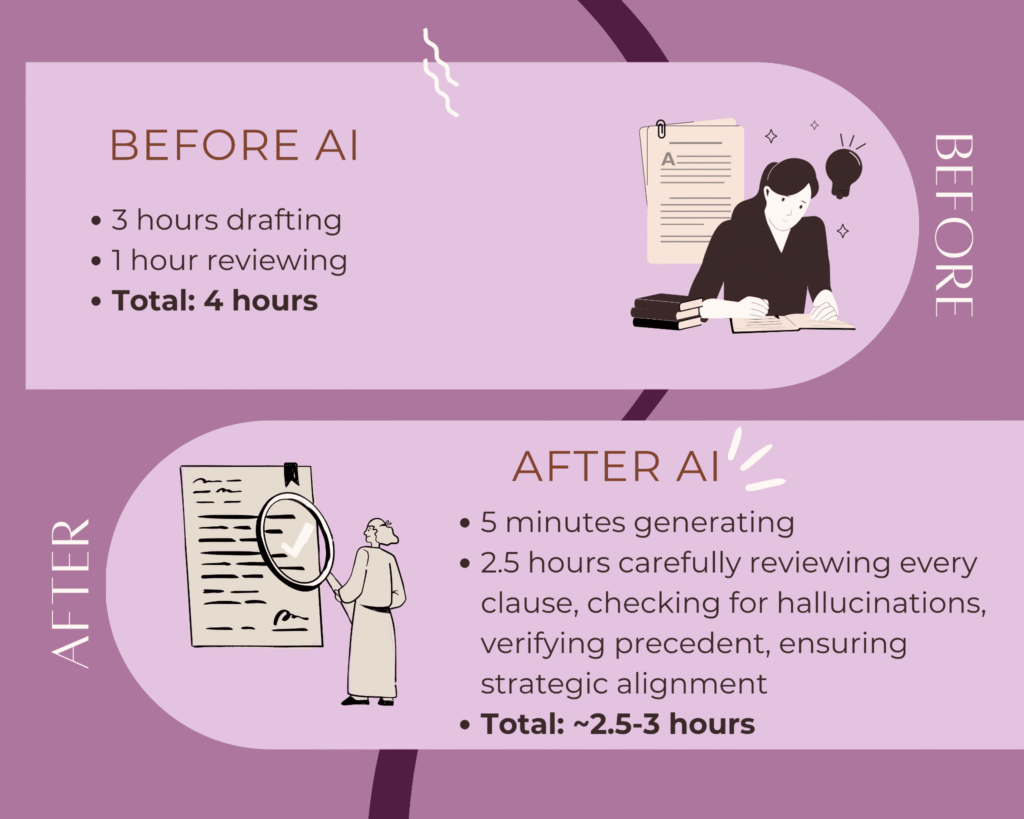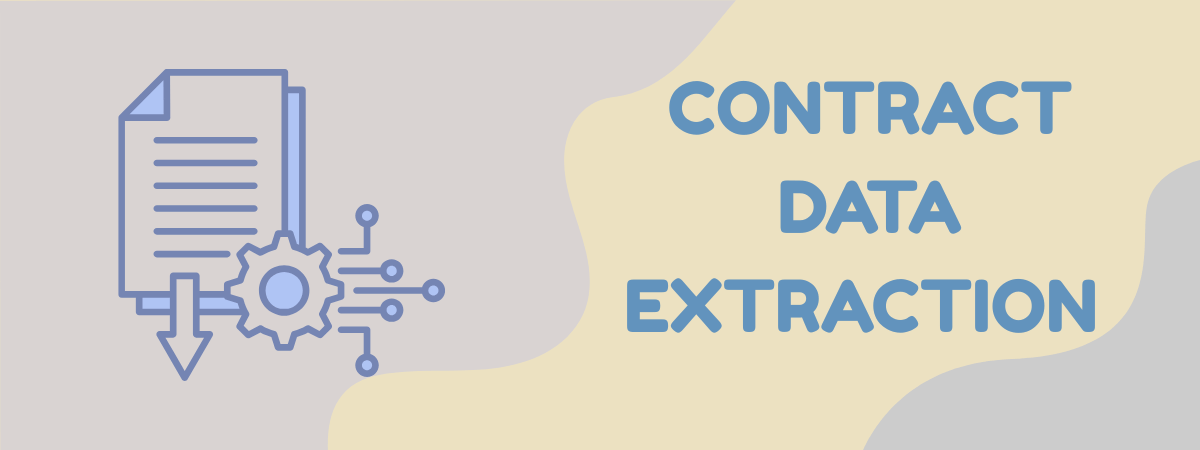The AI-Contract Drafting Paradox: Why AI Makes Legal Work Both Easier And Harder

Most people might assume that AI is making contract drafting easier, but is that really true? There’s so much talk about how AI is revolutionizing the legal industry, particularly the contract drafting process. In fact, so many law firms are adopting AI, similar to how tech-forward companies are embracing AI as well.
Key Takeaways:
● AI tools have been recognized for their ability to create first draft contracts, outperforming humans by a margin.
● A significant disparity exists between market predictions of AI usage and the actual adoption of AI tools by law firms.
● AI works well for boilerplate clauses, first drafts, consistency checks, and template refinement, but struggles with complex negotiations and industry-specific nuances.
● AI speeds up contract drafting, but lawyers end up spending a lot of time reviewing an AI-drafted contract.
● Perfect Doc Studio provides a hybrid approach with reusable templates, business rules, AI-assisted drafting, and seamless integration to balance AI efficiency and lawyer control.
Did you know a recent study showed how AI outperformed human lawyers by quite a margin? The study conducted by LegalBenchmarks.ai, found that human lawyers produced reliable first drafts 56.7% of the time, while several AI products met or exceeded their performance.
Even with such astonishing results, the reality is quite different. Surprisingly, Legal Industry Report 2025 shows that Law firms’ usage of AI has dropped from 24% in 2023 to 21% in 2024. Considering everything, we would assume that as time passes, there would be a larger-scale adoption of AI among law firms. Think about it, AI was never the innovation that the typewriter was; it is much more advanced, facilitating deal patterns, negotiator styles, and post-signature outcomes. It is a legal professional’s personal assistant, aiming to free up a lawyer’s time for more strategic tasks, while it takes on the mundane and repetitive task of contract drafting.
So, the million-dollar question? Why the paradox? Why do lawyers feel AI is useful, but adoption has reduced over the course of the year?
Let’s Look at Concrete Data
A recent market research shows that the AI legal Drafting Tools market is on the rise. It is predicted to grow from USD 811.8 million in 2025 to about USD 7,177.4 million by 2034.

This is just specifically for AI drafting, but when it comes to the broader global legal AI market size, the amount is valued at USD 1.45 billion in 2024 and is projected to reach USD 3.90 billion by 2030, growing at a CAGR of 17.3% from 2025 to 2030.
This, of course, is what statistics say, but as much as the projection and growth are discussed, let’s look at what adoption stats are like:
● Earlier, we looked at how the usage of Generative AI by law firms dropped to 21% in 2024 (from 24% in 2023)
● However, personal usage of Generative AI among lawyers shot up. (from 27% in 2023 to 31% in 2024).
● The report suggests that contract drafting and review hold 31.6%, showcasing AI’s capability to enhance speed, accuracy, and compliance in legal documentation.
According to a 2025 Thomson Reuters report, “the legal industry is demonstrating the strongest GenAI adoption rates among all professionals 28% for law firms and 23% for corporate legal departments.”
Why the vast disparity in the market projections and actual application, you ask? We examined community discussions, legal interviews, and other sources to get to the bottom of this.
The disconnect reveals something important.
Most Lawyers Struggle with The Black Box Problem
Ashford’s Legal Firm conducted an assessment of free AI tools, and this is what they had to say about it:
“All the solutions we looked at required detailed, legally insightful inputs to generate anything close to a workable starting point…in all cases still surfacing drafts with basic errors and notable clause omissions…so using the output of these solutions to contract with other parties may be a significant (and costly) mistake…”
This quote sums up the black box problem for lawyers quite aptly, “user inputs effectively go into a black box which spits out some suggested content. It is impossible to trace the origin of particular clause suggestions, which limits an assessment of their suitability. The AI’s access to an extensive library of existing legal documents will only be beneficial if some trust can be placed in their quality and relevance.”
To bring to your attention, there was widespread media coverage, globally and in the US, about lawyers being fined $5000 for submitting fake court citations from ChatGPT in a court filing. This happened in the year 2023. However, in January 2025, a legal team in South Africa used ChatGPT and submitted nine case authorities, of which only two were true. Simply put, they relied on a case law that just did not exist.
This is a major reason why lawyers are hesitant to use generative AI is because of how prone it is to hallucinations or inaccuracies. Let’s say we blame the lawyers for not verifying the facts beforehand. However, with the number of pages and documents involved, can lawyers truly go through each line to ensure the veracity of the documents?
Discover how generative and predictive AI tools simplify language, flag risks, and enable data-driven legal contract management for multiple business functions.
The Speed of AI Contract Drafting Reveals Hidden Complexities
We know how dangerous generative AI can be, but why do lawyers still use it? Simply because it is actually very convenient. Let’s examine the paradox in action: Lawyers use AI contract drafting tools to generate a commercial lease agreement. How long does it take for the AI to actually draft it? A mere 30 seconds. The speed at which it is drafted exposes all the decisions that used to be hidden in the slow, iterative drafting process.
Let me put it this way: this is how a typical contract is drafted.
A lawyer starts drafting a commercial lease for a client.
↓
He realizes an issue that is concerning for his client.
↓
Adjusts his draft to eliminate any issues.
↓
As he continues drafting, he identifies another issue.
↓
Makes the necessary adjustments.
↓
And, after multiple revisions, he finally gets it right.
Now, let’s look at how an AI generates a draft:
AI generates a complete draft in less than a minute.
↓
A lawyer must review all the different clauses simultaneously.
The American Bar Association’s article emphasizes the importance of lawyer oversight. It states how there has been a drastic increase in how lawyers use AI to automate the creation of contract drafts, but these drafts typically include irrelevant or improper provisions in to contract context.
The idea is that work is simpler with AI, but in reality, work isn’t simpler, but harder, just in a different manner.
Another lawyer on Reddit explained that rather than spending hours rewriting the contract over and over again, refining it. Now I spend hours deciding which of the AI’s 12 suggested indemnification clauses actually protect my client.
A lawyer on Reddit said, “I just see AI coming in as a second set of eyes to consult after attorney review. That is, here’s what I thought on my own that needs to be addressed. Now I’ll run the same contract through AI to see if I missed anything.”
Right now, what is AI capable of in terms of contract drafting?
Legal AI-tech companies are trying to grab headlines so they can edge out the competition, getting as many people as possible to use their product. This is where these tools miss their mark, with mediocre AI models being deployed.
Let me break down what is actually happening based on community insights. This will give you a picture of what works and what needs to be worked on.
Firstly, let’s look at what work:
1.Boilerplate Automation: AI, which works based on historical inputs and existing legal documents, is completely capable of drafting standard confidentiality clauses, definitions sections, and general provisions.
2.First-Draft Acceleration: Lawyers use AI to generate the first draft, and they refine it according to their needs.
3.Consistency Checks: As previously mentioned, lawyers tend to treat AI as a proofreader, considering it excels at maintaining consistent terminology across 50-page agreements.
4.Template Refinement: Rather than getting AI to draft the entire contract, AI is capable of modifying existing, trusted language for new contexts
Now let’s look at what doesn’t work:
1.Complex Commercial Negotiations: AI isn’t capable of complex payment mechanisms, earn-outs, and sophisticated release provisions. It may be able to draft straightforward ones, but anything more complex is beyond its scope, requiring human judgment.
2.Novel Deal Structures: AI, after all, can only analyze existing documents, but doesn’t have the creative capacity to create its own. Without a precedent to learn from, AI struggles to be creative.
3.Industry-Specific Nuance: AI would find it challenging to apply provisions to specific industries and differentiate between what can be used in what context. For instance, Healthcare compliance language vs. tech licensing provisions.
4.Strategic Positioning: An AI model isn’t advanced enough to understand why certain languages or words are advantageous for clients.
The Real Cost of AI Contract Drafting
Simply put, lawyers are trading drafting time for review time.

Lawyers save time, but at what cost? The cognitive load increases. They end up quality-checking someone else’s, or rather, something else’s work.
Fabian Blache III, a lawyer, described it in this way in a Quora discussion: “I can see where legal professionals could lean on AI for the foundational constructs of petitions, motions, exceptions, and even judgments. The lawyer will still have the legal obligation to review every jot and tittle to make sure that anything that they endorse and submit to the court is both lawful and compliant within the rules of procedure.”
Learn how top AI contract generators are transforming legal workflows, offering advanced automation features, clause suggestions, and built-in signing workflows for 2025
How Perfect Doc Studio Offers a Different Approach
Platforms like Perfect Doc Studio cannot be lumped together with mainstream AI-contract drafting tools. It isn’t some AI black box that lawyers would struggle with, but serves as a middle-ground solution that not only acknowledges the limitations of AI but also overcomes them through its unique capabilities and features.
Perfect Doc Studio is built differently from pure AI generator tools or contract analysis tools. Recognized as a legal document generator, with no-code architecture, template designers, and deep integrations for managing contracts, NDAs, compliance documents, and more
Let’s look at what makes Perfect Doc Studio (Stand Out:
Template-Based Contract Drafting: Instead of drafting contracts from scratch, Perfect Doc Studio uses a document automation approach: Reusable Sections and Reusable Pages. You can maintain control over the master template or source template and drag-and-drop these sections as needed.
Some examples of reusable sections that you just need to create once are Governing Law and Jurisdiction, Amendments/Modifications, Definitions, and more.
Some examples of reusable pages are Boilerplate Clauses, Confidentiality and Non-Disclosure Agreements, Waivers and Release of Liability, Cover Pages, and more.
Conditional Logic and Business Rules: Business rules are embedded in the documents, allowing you to generate clauses dynamically.
If a lawyer is drafting a service agreement for a consulting firm that offers various services like healthcare, logistics, retail, and more, Perfect Doc Studio only needs inputs from the lawyer. It then applies business rules to determine which clauses to include or exclude.
For example, if the lawyer selects “healthcare” as the sector, the AI may automatically add compliance clauses related to HIPAA (Health Insurance Portability and Accountability Act) requirements. Conversely, if “retail” is chosen, clauses related to consumer protection laws may be generated instead.
Extensive Template Library: Creating a document, reusable section, or pages is easy for any business user. This is one of the main reasons why it is not a black box for a lawyer. They can personally take charge and create the document without any technical know-how.
A simple drag-and-drop, user-friendly interface paired with no-code automation works like magic. A paralegal can assemble the document by using the templates from the library, while the supervising authority controls the clause library.
AI Text Generation: PDS’s ‘Write for me’ feature is built in, meaning you don’t have to switch tabs from your contract generation tool to any other AI platform. All you need to do is give it a prompt, and PDS drafts legal content for you.
Native Integration Engine: PDS’s engine seamlessly connects with core legal systems, such as Guidewire, MyCase, and Clio, as well as integrates with e-signature platforms without additional costs.
It also enables real-time, data-driven contract automation with inputs like SQL, JSON, and XML, making it ideal for scalable contract management.
Multichannel Delivery: Perfect Doc Studio supports multiple channels. Lawyers can send documents to be signed via mail, WhatsApp, post, and other methods. Alternatively, PDS can also upload it to any cloud server for storage and retrieval.
How to Create a Contract Using Perfect Doc Studio: Start by selecting a dynamic smart template from the content library. It automatically pulls case details from legal systems, Excel sheets, or API. Once the data is filed, a structured workflow ensures the quick and easy processing of negotiations and collaborative reviews. After everything is finalized, PDS sends out the document to be signed on the client’s preferred delivery channel and notifies you when it is completed.
How to Make the Most of Perfect Doc Studio
Step 1: Build Your Clause Library: Create approved clauses for various scenarios, including aggressive, balanced, and client-favorable positions on key terms. Since PDS works with your templates and your clause library, you know exactly where the language comes from and never have to doubt it. It is your own draft and your firm’s precedent, optimized and organized into folders, not retrieved from an unknown training corpus.
Step 2: Create Smart Templates: Build your own templates with our user-friendly interface. Incorporate conditional logic. For example, “If counterparty is in California AND deal value exceeds $1M, use enhanced indemnity language.”
Step 3: Business Rules and Conditional Logic: Based on the deal parameters, PDS will help assemble the right clauses, flagging inconsistencies, and the AI-template optimizer will suggest improvements to your contract.
Step 4: Human Review and Refinement: Once the contract is drafted, you can review with the full content of where each clause is and why it was selected in the preview section. After the review, it can be sent for approval.
Impressed by how easy it is to draft contracts? Sign up for a lifetime free account and try Perfect Doc Studio now!
Conclusion
The AI contract drafting paradox is very real, and unfortunately, it has become the reality of legal practice as AI has permeated our lives. Tools are slowly getting better, and now we see firsthand how much effort, expertise, and time go into routine contract drafting.
Platforms like Perfect Doc Studio are an ideal solution that leverages the power of AI and automation while giving lawyers control over contract creation and precedents. The Perfect Doc Studio team feels that it’s not about using AI to generate contracts but making strategic decisions about what goes where and why.
Firms that are thriving in this digital environment aren’t the ones that have completely shunned AI or entirely adopted it, but they are the ones that assess where AI fits and the value it adds. The goal with AI in legal tech has always been to simplify the job of lawyers, and that’s exactly what Perfect Doc Studio does.
FAQs
Studies show that AI can produce reliable first contract drafts about 56.7% of the time, often matching or exceeding the performance of human lawyers in initial drafting. However, AI drafts require careful review for accuracy and relevance to avoid costly errors.
AI adoption in law firms dropped from 24% to 21% due to trust issues, the black box problem, and the risk of AI-generated hallucinations or inaccurate contract provisions. Lawyers are cautious, as they must thoroughly verify AI output to maintain legal compliance.
The biggest challenges include a lack of transparency in AI’s clause sourcing, propensity for hallucinations, need for intensive review of multiple AI drafts, difficulty handling complex deal structures, and industry-specific customization.
AI excels at drafting boilerplate clauses, accelerating initial draft creation, ensuring terminology consistency, and refining existing templates through automation and business rule application.
Perfect Doc Studio uses reusable templates with embedded conditional logic, allowing lawyers to maintain control over clauses and templates while benefiting from AI-assisted drafting. Its transparent, no-code interface and seamless integration reduce AI’s black box risks.
AI reduces drafting time but increases review workload, as lawyers must validate and select appropriate clauses from AI-generated options, thus trading drafting effort for cognitive review intensity.
The market for AI legal drafting tools is rapidly expanding, with a shift toward hybrid solutions that combine the efficiency of AI with human legal judgment. Firms that strategically integrate AI tools within existing workflows are poised to gain a competitive advantage.
Why is CCM software extremely expensive?
Have you ever wondered why Customer Communication Management (CCM) software comes with such a hefty
How Contract Data Extraction Stops Revenue From Leaking
Discover how contract data extraction harnesses AI, OCR, and NLP technologies to unlock hidden reven
How will you choose Your Customer Communication Channels in 2023?
For a business that wants to keep as many customers as possible interested, you want to know what cu




